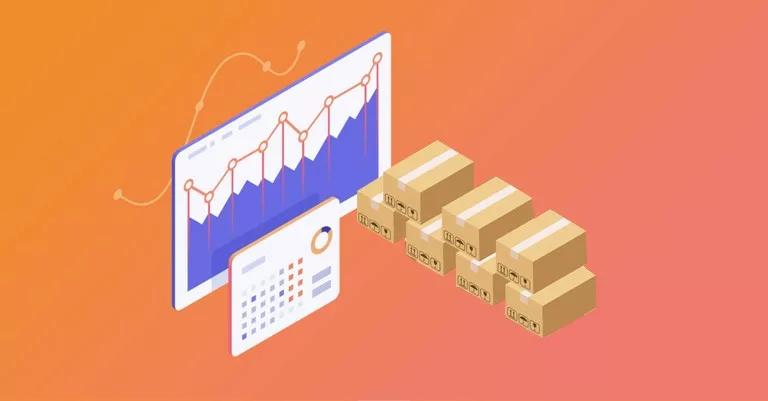Stockouts, a term you might have heard thrown around in the retail world, refer to the situation where a product becomes unavailable for purchase due to insufficient inventory. Now, why should brands care about stockouts? Well, it’s simple – they have the potential to significantly impact a brand’s reputation, customer satisfaction, and ultimately, their bottom line. When a brand consistently fails to manage its inventory properly, it risks leaving customers frustrated and empty-handed. In an age where consumer expectations are higher than ever, encountering frequent stockouts can lead to diminishing customer loyalty and negatively affect future sales. So, for brands that want to thrive in a competitive market, it’s crucial to maintain a well-managed inventory and keep those pesky stockouts at bay! Trust us, your brand’s reputation and customers will thank you.
Detrimental to both brands and retailers
Maintaining this customer loyalty isn’t a walk in the park. One significant obstacle that both brands and retilaers often face is stockouts. When customers can’t find their desired products on store shelves or online, it leads to disappointment and frustration. Not only do stockouts run the risk of tarnishing a brand’s image, but they also create an opportunity for rivals to swoop in and woo away disheartened consumers. So, while it might be tempting to focus solely on other aspects, remember that ensuring a seamless supply of products is vital in preserving your brand’s reputation and the overall customer experience. You don’t need to look far to find examples of brands that were impacted by stockouts – Peloton took a hit in 2021 during the pandemic due to fluctuating stock availability across the planet.
With the right strategies in place, you can minimize the impact of stockouts, keep your customers satisfied, and maintain your brand’s top-notch reputation.
The financial impact of stockouts
Stockouts can have a significant financial impact on a brand, and it’s important for businesses to recognize and address them effectively. When a retailer runs out of a particular item or product, it’s not just the lost sales that affect the bottom line. Customer defection is another important aspect to consider. Think about it: when a shopper eagerly anticipates purchasing a specific item and arrives at the store only to find it out of stock, they may be disappointed or even frustrated. This can lead to customers questioning the reliability of the brand and potentially opting for a competitor’s product instead. Over time, this pattern of stockouts and customer defection can erode brand loyalty and impact revenues more deeply than initially anticipated. For this reason, it’s crucial for brands to work closely with their retailers, ensuring adequate inventory management and timely replenishment strategies are in place, providing both customers and stakeholders with the assurance that the brand has the pulse of the market and is well-equipped to meet its demands.
Don’t let stockouts leave your brand gasping for air! Not only do these dreaded shortages strip away those precious sales, but they also bring in uninvited expenses. Imagine the strain of scrambling to produce more inventory, bearing the burden of rush fees and expedited shipping. Even worse, slashing your prices just to bid farewell to the excess stock when it finally arrives! Your bottom line is on the line, so defend it like a pro. Remember: prevention is always better than cure.
According to a study by IHL Group, in the United States alone an estimated $144.9 billion in sales is lost annually due to stockouts. Additionally, the study found that customers who experience stockouts are 40% more likely to shop with a competitor in the future. Imagine investing all that energy on user acquisition, only to potentially send your visitor to a competitor due to mismanaged stock.
Overall, the financial impact of stockouts can be significant and far-reaching. Brands must not only carefully manage their own inventory, but that of their retail partners as well to avoid unfulfilled demand and the negative consequences that come with it.
Mitigating stock problems
Navigating the world of inventory management can be a tricky endeavor, but fear not, as there are strategies and tips to help you mitigate the dreaded stockouts.
Stock forecasting
First and foremost, having a robust forecasting system in place is essential for predicting demand and adjusting your inventory accordingly. Don’t shy away from utilizing technology and data to help make informed decisions.

Redirect towards other goods
Use promotions and discounts to redirect traffic from products out of stock towards slow-moving inventory. It’s a reliable way to capitalize on the visit, capture sales that would otherwise never happen and reduce excess inventory levels.
Spread out your stock
Spread safety stock out amongst your retailers. It’s advisable to make sure your customers have their say in the desired path to purchase – make sure they have the choice between physical and digital vendors alike. It could be a major friction point for some consumers.
When all else fails, communicate
Brands should be transparent with customers about inventory levels and potential delays. By keeping customers informed about product availability, brands can manage expectations and reduce frustration. The very act of informing a visitor that they product they’re searching for isn’t in stock at a certain retailer can do wonders for their goodwill in the eyes of the consumer.

